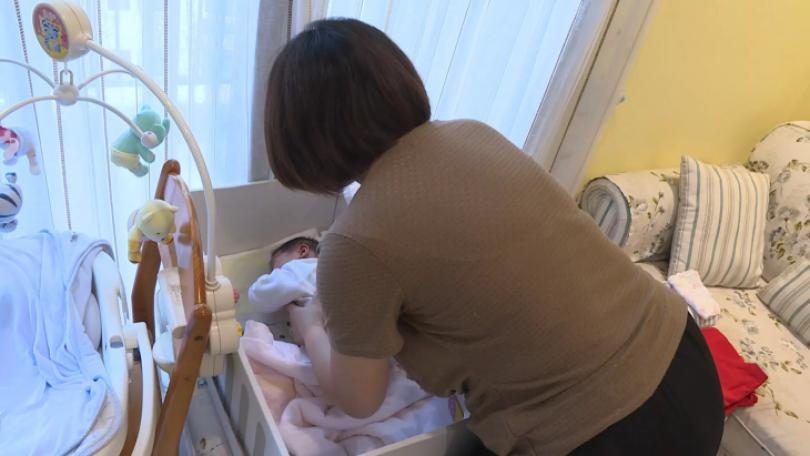Schools May Be Forced to Raise Lunch Prices 原物料飆漲 影響雙北學童營養午餐價格
The Directorate-General of Budget, Accounting and Statistics published price induh-cees for February. The CPI decreased somewhat, although the prices of vegetables, meat, seafood, and eggs all rose. Some schools in the greater Taipei area may be forced to increase the lunch price due to soaring commodity prices.
It's lunchtime at this elementary school. Schools in the greater Taipei area are facing difficulties in providing nutritious lunches to their students in light of soaring commodity prices. Some have surveyed parents about possible price increases.
Kuo Wen-cheng, Academic Affairs Director, Taipei Bo Ai Elem. School: “We'll be inviting bids again in July, so we have to conduct a survey. Adjustments will only be made after we reach an agreement on a percentage.”
Chen Ming-hsin, Chairperson, Boxed Lunch Association: “The entire world is helpless against the inflation from the pandemic and the Ukraine-Russia war. The information that I currently have is that schools in all cities and counties want to adjust their lunch prices.”
The Directorate-General of Budget, Accounting and Statistics published the Price Indices for February on March 7. The CPI increased 2.43 percent compared with the same month last year. Although the CPI decreased compared to the preceding month, the prices of tomatoes and foreign travel expenses increased by over 25 percent. The prices of cabbage and salmon grew by over 20 percent, while the price of eggs grew by 11 percent. There is a very high chance that the electricity price deliberation committee will decide on a price increase when it meets at the end of the month, which will in turn cause the CPI to increase in May.
Tsao Chih-hung, Senior Specialist, Dept. of Statistics, DGBAS: “The CPI grew by 2.61 percent in the first quarter this year, and should be around 2 percent in the second, third, and fourth quarters, but electricity price adjustments haven't been included yet.”
The Ministry of Finance also released its summary of exports and imports for February. Total exports contracted 17.1 percent year-on-year to US$31.05 billion, and amounted to US$62.56 billion in the January-February period, which was nearly 20 percent lower than the same period last year. The length of time with negative growth now stands at six months and the length of time with a double-digit decline now stands at four months.
Tsai Mei-na, Director, Department of Statistics, MOF: “In the five major trading partners, the highest decline was seen for Mainland China and Hong Kong, at over 30 percent. This is primarily a reflection of the slackening of the global electronics industry as well as the slower recovery of domestic demand in China, which are causing our exports to there to decline by nearly one-third.”
The MOF said end demand is sluggish and the growth momentum of the global economy is weakening. Industrial chains continue to adjust inventories, which stifles the willingness of manufacturers to prepare materials. The total value of imports in February was US$28.7 billion, the lowest value in 24 months.
午餐時間到滿滿的菜色擺放在桌上,要讓學生每一口都吃得營養,但受到原物料調漲,連帶影響到雙北學童的營養午餐價格,現在已有多所學校在向家長調查調價意願。
北市博愛國小教務主任郭文成指出:「7月馬上又要再招標重新招標,所以必須經過調查,通過一定的百分比之後,它才會做這樣的調整。」
中華民國餐盒同業公會理事長陳明信說道:「因為疫情跟烏俄戰爭的影響,其實這個通膨是全世界不可去阻擋的。以目前我收到的訊息是,各縣市的學校都有要調整午餐價格的這個狀況。」
主計總處公布2月消費者物價總指數,年增率為2.43%,雖然漲幅比1月收斂,但包括番茄、國外旅費還是漲25%以上,高麗菜、鮭魚漲2成多,雞蛋也漲了11%。若這個月底所召開的電價審議委員會有極高機率將調漲電價,可能會帶動5月CPI上漲。
主計總處綜合統計處專門委員曹志弘指出:「今年第1季上漲2.61%,2、3、4季CPI大概就2%上下,還沒有納入電價的,如果未來有調整的影響。」
財政部也公布海關進出口貿易初步統計,2月出口310.5億美元,年減17.1%,累計前2月出口625.6億美元,比去(2022)年同期減少近2成,不只是連續6個月負成長,也是連續4個月呈現2位數衰退。
財政部統計處長蔡美娜表示:「在5大市場當中,對中國大陸與香港的減幅是最深的,高達3成,主要是反映整個全球的電子產業的景氣走弱,也反映了中國大陸內需目前的復甦步調還是屬於比較低緩,造成我們對它的出口下滑了將近三分之一。」
財政部表示,終端需求不振,全球經濟成長動能減弱,產業鏈持續調整庫存壓抑廠商備料意願,而2月進口金額287億美元,也同步下降到24個月低點。









